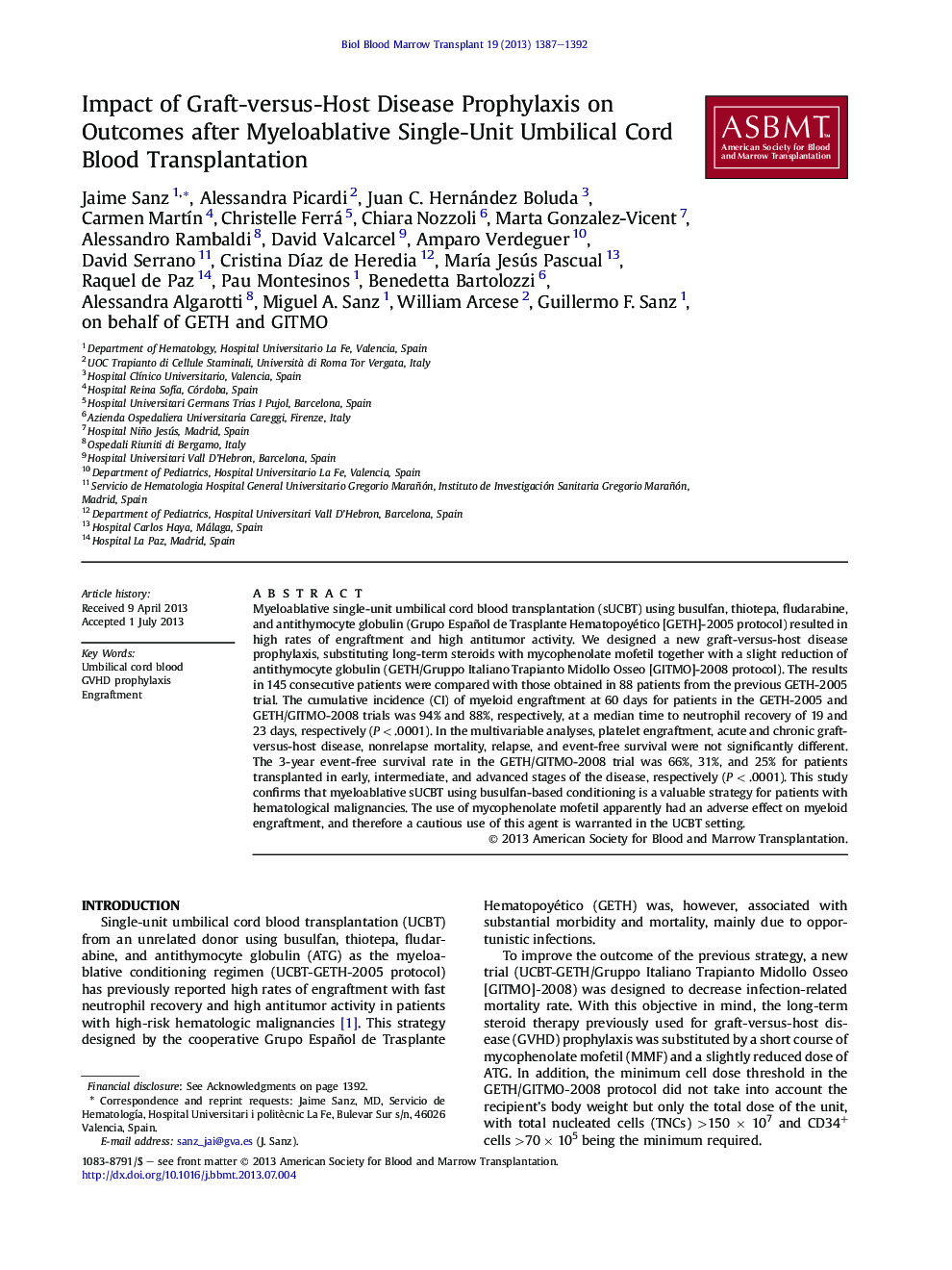| Article ID | Journal | Published Year | Pages | File Type |
|---|---|---|---|---|
| 2102288 | Biology of Blood and Marrow Transplantation | 2013 | 6 Pages |
Myeloablative single-unit umbilical cord blood transplantation (sUCBT) using busulfan, thiotepa, fludarabine, and antithymocyte globulin (Grupo Español de Trasplante Hematopoyético [GETH]-2005 protocol) resulted in high rates of engraftment and high antitumor activity. We designed a new graft-versus-host disease prophylaxis, substituting long-term steroids with mycophenolate mofetil together with a slight reduction of antithymocyte globulin (GETH/Gruppo Italiano Trapianto Midollo Osseo [GITMO]-2008 protocol). The results in 145 consecutive patients were compared with those obtained in 88 patients from the previous GETH-2005 trial. The cumulative incidence (CI) of myeloid engraftment at 60 days for patients in the GETH-2005 and GETH/GITMO-2008 trials was 94% and 88%, respectively, at a median time to neutrophil recovery of 19 and 23 days, respectively (P < .0001). In the multivariable analyses, platelet engraftment, acute and chronic graft-versus-host disease, nonrelapse mortality, relapse, and event-free survival were not significantly different. The 3-year event-free survival rate in the GETH/GITMO-2008 trial was 66%, 31%, and 25% for patients transplanted in early, intermediate, and advanced stages of the disease, respectively (P < .0001). This study confirms that myeloablative sUCBT using busulfan-based conditioning is a valuable strategy for patients with hematological malignancies. The use of mycophenolate mofetil apparently had an adverse effect on myeloid engraftment, and therefore a cautious use of this agent is warranted in the UCBT setting.
